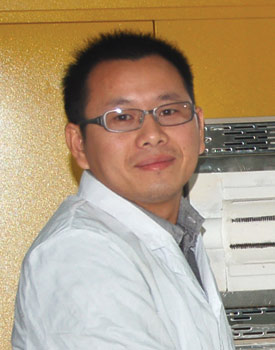'Fixing' Apple watch with a better battery
Updated: 2015-03-20 12:20
By Wang Ying in Shanghai(China Daily USA)
|
||||||||
A Chinese professor is working on a solution to the short battery life of the Apple watch, and he hopes to find investors for his potentially game-changing product in Shanghai.
The wearable device, which is due to be released on April 24, has invited derision due to its stingy 18-hour battery life despite offering a slew of attractive functions such as its ability to track the user's health.
 |
|
Peng Huisheng |
But newly developed super-capacitor and lithium-ion batteries developed by a research group in Shanghai may help solve the problem. The batteries are made from carbon nanotubes that can be woven together like fabric, or strands of human hair, to prolong the watch's battery life, the group said.
The project is being spearheaded by Peng Huisheng, a science professor from Fudan University's department of macromolecular science. Fudan is one of China's top universities.
"Lithium-ion batteries are widely used nowadays but they gradually lose stability, which runs down the actual battery life," said Gao Mingxia, a professor from Zhejiang University.
The trick to fixing this problem is to weave the new battery 'hairs' into the fabric of the wristband, according to Yang Junhe, a professor from the University of Shanghai for Science and Technology, who was involved in the research.
"The Apple watch's case can only fit a small battery that doesn't last long. But if we turn the whole watchband into an elastic battery using special wearable fabrics it can last much longer," said Peng.
"It's theoretically possible," said Gao. "The wearable fabric can be more powerful because of its high density."
Peng came up with the idea of developing wearable fabrics by weaving in solar cells and batteries in 2007. He set up a 28-member research group in late 2008 at Fudan.
"The original idea was to make fabric-based solar cells that can generate solar power and store the power in fabric-shaped cells," he said.
The cells would then be woven into clothes, watchbands, bags or even tents, he added.
In 2010, Peng's group made the idea a reality by putting solar cells into batteries. They have been working on the application of wearable fabrics since 2012.
"We've been approached by many companies that are interested in commercializing this," said Peng, adding that one of Apple's top rivals has also expressed interest.
The fabrics made of carbon nanotubes are expected to be available as super-capacitor and lithium-ion batteries in about three years, he said. The former has a greater storage capacity.
The solar-powered cells will be ready for mass production within a decade, he added.
Yang said carbon nanotubes are expensive to manufacture but the price will shear down once the batteries enter mass production.
wang_ying@chinadaily.com.cn

 China joins legendary flower show
China joins legendary flower show
 Monks perform tea-picking ritual in Hangzhou
Monks perform tea-picking ritual in Hangzhou
 Singapore founding father Lee Kuan Yew
Singapore founding father Lee Kuan Yew
 Solar eclipse wows viewers
Solar eclipse wows viewers
 New Year Carnival thrills Vancouver
New Year Carnival thrills Vancouver
 Across America over the week (from March 13 to 19)
Across America over the week (from March 13 to 19)
 How much do world leaders earn?
How much do world leaders earn?
 Daredevil ropejumpers leap 200 meter off cliff
Daredevil ropejumpers leap 200 meter off cliff
Most Viewed
Editor's Picks

|

|

|

|

|

|
Today's Top News
Singapore former PM Lee Kuan Yew passes away
Six Western economies apply to join AIIB
US urged to honor pledge
Ex-wife of Chinese fugitive
to be released
China's plan to move from being 83
Investors tour Bay Area
Ex-Chinese official indicted in
money laundering
Yahoo to exit from Chinese
mainland market
US Weekly

|

|








